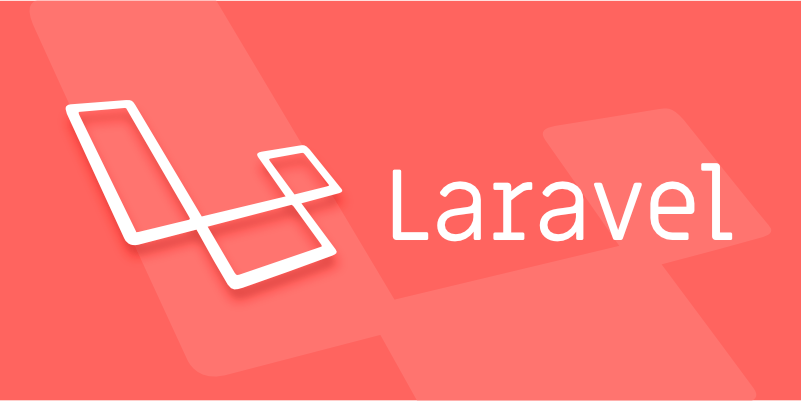Setting up Notifications via Different Channels in Laravel?
Jul 07, 2025 am 01:59 AMThe core of setting up multi-channel notifications in Laravel is to use the built-in Notifications system and combine it with different channels. 1. Use php artisan make:notification to create a notification class, and specify channels such as mail and database through via() method, and then implement toMail(), toDatabase() and other methods to define content; 2. Configure the parameters of each channel, if the mail needs to be configured in .env, the database needs to run migration commands, Slack needs to provide a Webhook URL, and SMS can use a third-party package; 3. Users can dynamically control reception preferences through routeNotificationForXxx() method or logic in the model; 4. Trigger notifications through $user->notify() single send, Notification::send() batch send, or asynchronous queue sending of the ShouldQueue interface.

Setting up multi-channel notifications in Laravel is the core of using the built-in Notifications system to cooperate with different "channels" to realize notification push in SMS, email, database records and even Slack. This not only has a clear structure, but also can flexibly adapt to business scenarios.

1. Use the built-in notification system
Laravel provides notifications out of the box, you can create a notification class through php artisan make:notification . This class supports multiple notification channels by default, such as email, SMS, database, etc.

To use these channels, just define the via() method in your notification class and return the channel name you want to use, for example:
public function via($notifiable)
{
return ['mail', 'database'];
} Then you can implement toMail() , toDatabase() and other methods to define the specific content of each channel.

2. Configure different notification channels
Laravel supports multiple notification channels, commonly used ones include:
-
mail: email notification -
database: write to the database -
broadcast: Live broadcast (combined with Pusher or Laravel Echo) -
slack: Send to Slack - Custom channels (such as SMS services)
Common configuration items description:
- Mail : Make sure that MAIL_* related parameters are correctly configured in
.env - Database : You need to run
php artisan notifications:tableto create table - Slack : You need to provide a Webhook URL, and use
toSlack()to define the message content in the notification class. - SMS : You can use third-party packages (such as Laravel Notifynder or Nexmo)
3. Specify user notification preferences
Sometimes, users may wish to receive only certain types of channel notifications. At this time, you can add logical judgments to the user model or other notified objects.
For example:
public function routeNotificationForMail()
{
return $this->email;
}
public function routeNotificationForNexmo()
{
return $this->phone_number;
}If you are using a custom SMS service, you can also dynamically decide whether to enable a certain channel based on the user's settings field:
public function via($notifiable)
{
$channels = ['database'];
if ($notifiable->wants_email_notifications) {
$channels[] = 'mail';
}
return $channels;
}This allows you to flexibly control notification methods according to the preferences of different users.
4. Several ways to send notifications
You can choose the following ways to trigger notifications:
Directly call
notify()method:$user->notify(new InvoicePaid($invoice));
Use
Notification::send()to send in batches:Notification::send($users, new ServerDown());
Asynchronously sent through queues (recommended): As long as you use the
ShouldQueueinterface in the notification class, you can automatically queue and process it to avoid blocking requests.
Basically that's it. By mastering via() and various toXxx() methods, and coordinating with user preferences and channel configuration, you can easily implement the notification system in Laravel.
The above is the detailed content of Setting up Notifications via Different Channels in Laravel?. For more information, please follow other related articles on the PHP Chinese website!

Hot AI Tools

Undress AI Tool
Undress images for free

Undresser.AI Undress
AI-powered app for creating realistic nude photos

AI Clothes Remover
Online AI tool for removing clothes from photos.

Clothoff.io
AI clothes remover

Video Face Swap
Swap faces in any video effortlessly with our completely free AI face swap tool!

Hot Article

Hot Tools

Notepad++7.3.1
Easy-to-use and free code editor

SublimeText3 Chinese version
Chinese version, very easy to use

Zend Studio 13.0.1
Powerful PHP integrated development environment

Dreamweaver CS6
Visual web development tools

SublimeText3 Mac version
God-level code editing software (SublimeText3)

Hot Topics
 What are routes in Laravel, and how are they defined?
Jun 12, 2025 pm 08:21 PM
What are routes in Laravel, and how are they defined?
Jun 12, 2025 pm 08:21 PM
In Laravel, routing is the entry point of the application that defines the response logic when a client requests a specific URI. The route maps the URL to the corresponding processing code, which usually contains HTTP methods, URIs, and actions (closures or controller methods). 1. Basic structure of route definition: bind requests using Route::verb('/uri',action); 2. Supports multiple HTTP verbs such as GET, POST, PUT, etc.; 3. Dynamic parameters can be defined through {param} and data can be passed; 4. Routes can be named to generate URLs or redirects; 5. Use grouping functions to uniformly add prefixes, middleware and other sharing settings; 6. Routing files are divided into web.php, ap according to their purpose
 What are policies in Laravel, and how are they used?
Jun 21, 2025 am 12:21 AM
What are policies in Laravel, and how are they used?
Jun 21, 2025 am 12:21 AM
InLaravel,policiesorganizeauthorizationlogicformodelactions.1.Policiesareclasseswithmethodslikeview,create,update,anddeletethatreturntrueorfalsebasedonuserpermissions.2.Toregisterapolicy,mapthemodeltoitspolicyinthe$policiesarrayofAuthServiceProvider.
 How do I create new records in the database using Eloquent?
Jun 14, 2025 am 12:34 AM
How do I create new records in the database using Eloquent?
Jun 14, 2025 am 12:34 AM
To create new records in the database using Eloquent, there are four main methods: 1. Use the create method to quickly create records by passing in the attribute array, such as User::create(['name'=>'JohnDoe','email'=>'john@example.com']); 2. Use the save method to manually instantiate the model and assign values ??to save one by one, which is suitable for scenarios where conditional assignment or extra logic is required; 3. Use firstOrCreate to find or create records based on search conditions to avoid duplicate data; 4. Use updateOrCreate to find records and update, if not, create them, which is suitable for processing imported data, etc., which may be repetitive.
 How do I run seeders in Laravel? (php artisan db:seed)
Jun 12, 2025 pm 06:01 PM
How do I run seeders in Laravel? (php artisan db:seed)
Jun 12, 2025 pm 06:01 PM
Thephpartisandb:seedcommandinLaravelisusedtopopulatethedatabasewithtestordefaultdata.1.Itexecutestherun()methodinseederclasseslocatedin/database/seeders.2.Developerscanrunallseeders,aspecificseederusing--class,ortruncatetablesbeforeseedingwith--trunc
 What is the purpose of the artisan command-line tool in Laravel?
Jun 13, 2025 am 11:17 AM
What is the purpose of the artisan command-line tool in Laravel?
Jun 13, 2025 am 11:17 AM
Artisan is a command line tool of Laravel to improve development efficiency. Its core functions include: 1. Generate code structures, such as controllers, models, etc., and automatically create files through make: controller and other commands; 2. Manage database migration and fill, use migrate to run migration, and db:seed to fill data; 3. Support custom commands, such as make:command creation command class to implement business logic encapsulation; 4. Provide debugging and environment management functions, such as key:generate to generate keys, and serve to start the development server. Proficiency in using Artisan can significantly improve Laravel development efficiency.
 How do I install Laravel on my operating system (Windows, macOS, Linux)?
Jun 19, 2025 am 12:31 AM
How do I install Laravel on my operating system (Windows, macOS, Linux)?
Jun 19, 2025 am 12:31 AM
Yes,youcaninstallLaravelonanyoperatingsystembyfollowingthesesteps:1.InstallPHPandrequiredextensionslikembstring,openssl,andxmlusingtoolslikeXAMPPonWindows,HomebrewonmacOS,oraptonLinux;2.InstallComposer,usinganinstalleronWindowsorterminalcommandsonmac
 How do I define methods (actions) in a controller?
Jun 14, 2025 am 12:38 AM
How do I define methods (actions) in a controller?
Jun 14, 2025 am 12:38 AM
Defining a method (also known as an action) in a controller is to tell the application what to do when someone visits a specific URL. These methods usually process requests, process data, and return responses such as HTML pages or JSON. Understanding the basic structure: Most web frameworks (such as RubyonRails, Laravel, or SpringMVC) use controllers to group related operations. Methods within each controller usually correspond to a route, i.e. the URL path that someone can access. For example, there may be the following methods in PostsController: 1.index() – display post list; 2.show() – display individual posts; 3.create() – handle creating new posts; 4.u
 How do I run tests in Laravel? (php artisan test)
Jun 13, 2025 am 12:02 AM
How do I run tests in Laravel? (php artisan test)
Jun 13, 2025 am 12:02 AM
ToruntestsinLaraveleffectively,usethephpartisantestcommandwhichsimplifiesPHPUnitusage.1.Setupa.env.testingfileandconfigurephpunit.xmltouseatestdatabaselikeSQLite.2.Generatetestfilesusingphpartisanmake:test,using--unitforunittests.3.Writetestswithmeth






